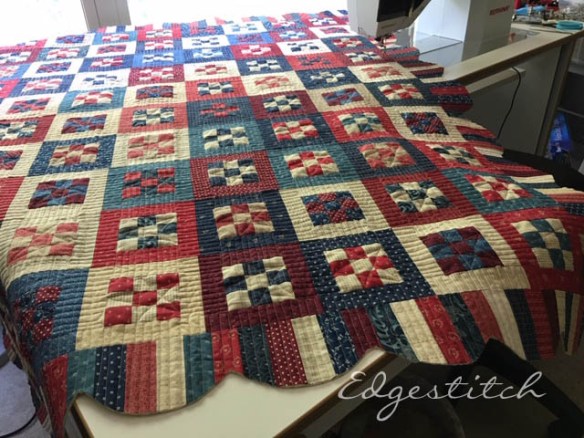
Do you have a pair of pants that are past pretending to be cool with all their holes? Shirts with stains? ( I seem to have a lot of these, I can’t seem to keep my food in my mouth. Kids, this is something they don’t tell you about aging. You constantly have your food on your shirt. Yes, it’s gross. You’ll get there soon enough.)
My husband is particularly good at wearing down the hems of his pants. (Another sign of aging…you seem to get shorter and your pants drag on the ground.)
Although for those of us who have never been considered tall, dragging hems is a lifelong problem.
But hey! We fix our clothes now. I’d love to do a blog post on fast fashion and where all our cheap clothes end up. We all know it’s a problem. We can’t just keep purchasing new clothes and throwing out the old ones or even just donating them. Third world countries are telling us to keep our crap. They have enough stupid t-shirts, thanks.
Here’s a pair of stretchy pants that were way too long and were an easy fix on a serger using the cover stitch.


Of course, mending and hemming are where a serger really comes in handy. For the shredded hems. I just run them through the serger and hem on the sewing machine. Takes a few minutes, and the pants get a bit shorter, but a really quick solution, all things considered.
Speaking of all things NOT considered, here’s another mending project.

I have this sweatshirt which I made, and it is actually quite loved. Worn and worn and worn. But I set it aside when I realized it had grease stains on the front. Probably from cooking at some point. Aprons actually do have a function, but I’m not yet ready to wear one around the house. (That’s really crossing an old lady rubicon for me. Still, why deny the inevitable?)
I decided to cover it with some hand embroidery. Looking back, I probably should have just embroidered a few strategically-placed daisies and been done with it. Instead, I used a photo out my back window, and converted it to a hand embroidery design.
I drew it out onto a piece of wash away stabilizer, so I could see it on the dark fabric. I think I should have just drawn it using a white pencil. The washaway stabilizer made every stitch a bit harder to push and pull through. And there are a LOT of stitches.
This design took me a ridiculously long time to finish. So simple, yet so time-consuming.


And to be honest, I’m not a hundred percent sure I love it, but it is interesting. The washaway was rather stubborn and I had to rinse it in the sink for quite a while.

I finally threw it into the wash and pulled it out before it got to the dryer. I ironed it while it was still damp.
Here’s a tip:
When ironing embroidery, even machine embroidery, use a towel on top of the embroidery. A hot iron will flatten it and take away all the dimension, and it might even harm the thread. So just use a towel over the top which allows the threads in the design to have a place to go.

It turned out kind of fun, almost like a window in the middle of my sweatshirt. In fact, I’m thinking I just might add a frame around it to make it look like a window. It has that hand-made feel, which is something that was important to me. I also get a kick that it’s the early spring view out my family room window. All in all, it was a learning experience.
I love the look of visible mending that all the kids are doing these days. I’ll be trying more and more. I have plenty of jeans with holes in the knees.
Here’s to making things last a bit longer. Like the planet.
Hugs and stitches.








































![IMG_1335[1]](https://i0.wp.com/edgestitch.com/wp-content/uploads/2013/03/IMG_13351.jpg?resize=300%2C225)
![IMG_1329[1]](https://i0.wp.com/edgestitch.com/wp-content/uploads/2013/03/IMG_13291.jpg?resize=300%2C225)